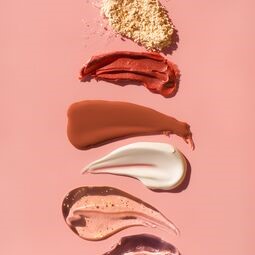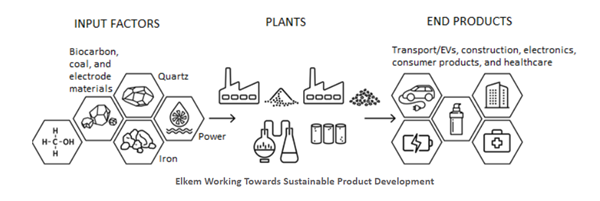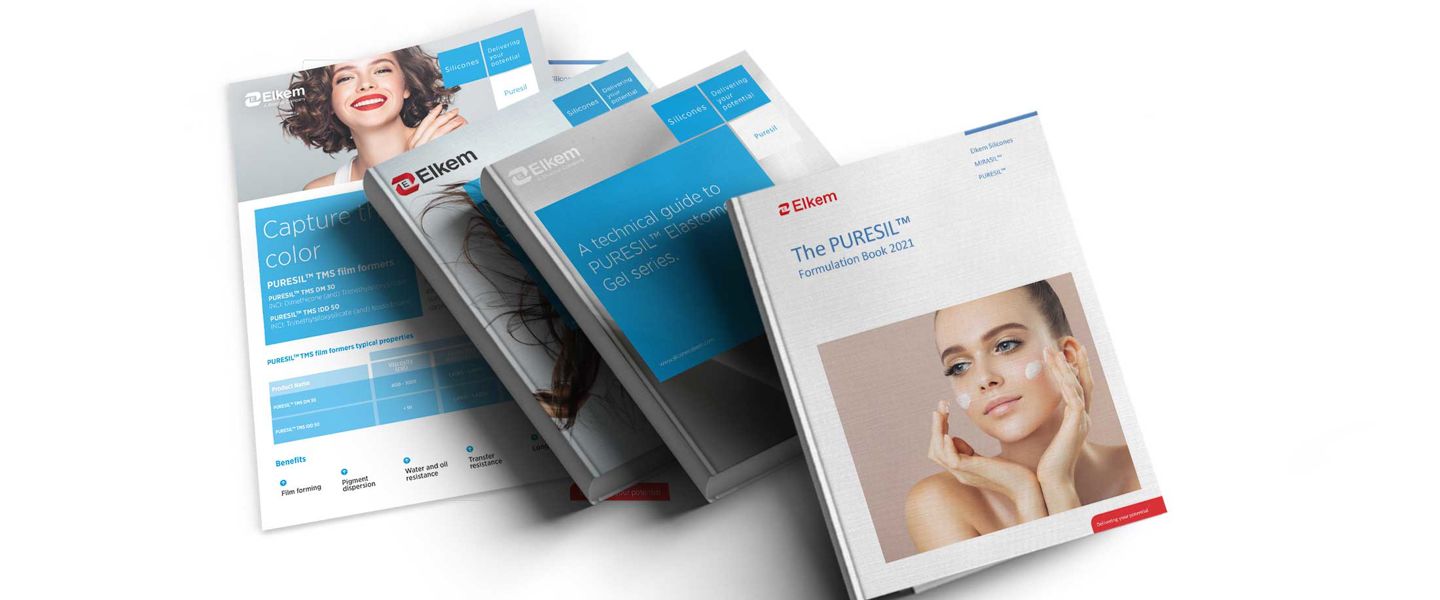- Personal Care and Consumer Goods
- Sustainable Classic Ingredients for the Next Generation of Beauty
Sustainable Classic Ingredients for the Next Generation of Beauty
An Interview with Feifei Lin and Pierre Defaux from Elkem
Environmental sustainability, a circular economy, and even regenerative business are very significant concepts in the cosmetics and personal care industry today, and rightly so.
But in our global consumer economy, there is no single, simple solution to eco-friendly beauty. The challenges are quite nuanced. This is why brand leaders, cosmetic chemists, and other product innovators scrutinize prospective suppliers and manufacturing processes. It’s one of the reasons NPD teams take product format and packaging into careful consideration.
The meaningful nuances of sustainability, circularity, and regenerative business are why it’s so important that we look behind the brands and consider:
- How individual ingredients are sourced and processed?
- How do they impact product formulation and consumer application?
- What happens to any given ingredient after that — What happens to an ingredient once a product is rinsed off, washed off, or otherwise discarded?
A classic example: If we look back over the past half-century of beauty, some of the most dependable classic ingredients across skincare, body care, color cosmetics, and hair care are silicone-based.
To learn about the past, the future, as well as the sustainability of silicones, I spoke with the team at Elkem, a global material solutions company headquartered in Oslo, Norway, with a founding mandate to create value from hydropower and from that country’s abundant natural resources. Here is what I heard from Feifei Lin, Global Marketing Manager of Personal Care, and Pierre Defaux, Global Director of Fluid Products at Elkem.
Please share a bit about the history of silicones in beauty

Well, silicones found their way into skincare back in the early 50s, and as we rolled into the 70s, they started making their mark in hair care too. Fast forward to today, a wide variety of silicones are delivering unparalleled benefits and sensory attributes across the board. Silicones are pretty much everywhere in beauty, whether we're talking about hair care, deodorants, sun care, color cosmetics, or complexion products.
You see, silicones have made their mark because they enhance product formulations. They do wonders for skincare and sun care products, giving them that silky, easy-to-spread texture and that one-of-a-kind velvety feel. All this while still being breathable.
Silicones work wonders in deodorants too, improving the feel and performance. When it comes to makeup, they're like the secret sauce for even pigment dispersion and making those long-lasting and waterproof formulas possible.
But it's in the world of haircare where consumers and cosmetic scientists alike can tell you, they work wonders. From making hair easier to manage and comb, to detangling and adding that smoothness, shine, and frizz control. They even offer heat protection, and protection from UV rays and color fading, all while helping to repair damage and reducing drying time.
That's why silicones have been a staple in the beauty and personal care industry for so long – they deliver!
Oh, and it's worth noting that silicones have some other impressive qualities. Silicone chemistry is very versatile and the majority of the silicone polymers used in personal care are non-reactive. Silicones are breathable, flexible, and hypoallergenic. That's why you'll find them not just in beauty but throughout the health and medical sector. Take contact lenses, for instance, they typically include silicone. Intrauterine devices, implantable devices such as pacemakers, and artificial joints all include it too.
For over 30 years, silicone gel sheets — similar to the silicone elastomer gels used to enhance skin care products in personal care—have been used for scar therapy treatment, clinically proven to reduce scarring and prevent kelation. Plus, the FDA over-the-counter (OTC) skin protectant monograph for the treatment of cuts, burns, and chapped lips recognizes dimethicone as an effective ingredient. Chemically, dimethicone is the same molecule used in personal care as an emollient and hair conditioner!
Due to their inorganic backbones, silicones tend to not react with other ingredients and with human tissues. This means they are largely biologically inert. Plus, they are non-irritating and non-allergenic, which makes them suitable for a wide range of consumers. Not every classic beauty ingredient stands the test of time, but with proven effectiveness and a track record of consumer safety, silicones continue to be highly relevant.
Let’s talk about that. You’ve shared with me in earlier conversations that the safety of silicones has been well-researched. Can you put that into perspective?
Absolutely! Silicone-based ingredients' safety is backed up by a significant amount of research. In fact, with over 1,000 studies, silicones are one of the most safety-tested classes of materials used in personal care. An article published in SOFW titled, The Power of Silicones in Cosmetic Applications: The Science behind the Performance, for instance, gives a neatly referenced overview of silicones safety, chemistry, efficacy, and more.
In addition to all the medical applications and the FDA monograph I just mentioned, the Cosmetic Ingredient Review concluded in their most recent expert review that silicones are safe as personal care product ingredients.
Okay. So, let’s consider the full life cycle of these ingredients. Please take us through the origin story: What are silicones? And where do they come from
In terms of beauty products, when we talk about silicones, we're referring to an extensive family of polymer ingredients. In the case of silicone polymers, they can come in various forms: you've got liquids, oils, waxes, elastomers, and more.
Silicones are derived from the element silicon. Silicon is actually the second most abundant natural element on Earth, right after oxygen. In nature, the most recoverable form of silicon is quartz, one of the most common minerals in the Earth's crust. And you might be surprised to know that silicon is actually part of our diet! It occurs naturally in rice, barley, oats, and wheat, and in some nuts, fruits, and veggies too, like apples, bananas, carrots, potatoes, and green beans.
Now, when it comes to Elkem's personal care ingredients, we've got a pretty good setup. We source most of the quartz that becomes, for example, our PURESIL™ line of elastomer gels right from bountiful mines. The company owns and operates many of its own mines in Norway and Spain.
How does the silicon in that quartz then become a beauty care ingredient?
When you look at the kind of demand we're talking about from beauty product manufacturers and other markets, it's inevitable that silicone suppliers (Elkem included) use industrial-scale production processes. There are multiple steps involved. Here's how we go about it:
- We start with quartz, extract silicon, and grind it into a fine powder
- Then, use chemistry to synthesize siloxanes, the basic building block of silicone polymers
- To create various ingredients, we combine the monomers into polymer chains or 3D networks which we call elastomers
Just like any classic ingredient company, we're actively making the shift towards cleaner production methods. In a first-of-its-kind project in the silicones industry, at our smelter in Rana, Norway, a carbon-capture pilot evaluation is underway! Elkem is investing in carbon capture technology to further reduce our carbon emissions long term.
Staying true to our original mission—Did I tell you that Elkem was founded in 1904? — So in line with our founding mission, our facilities in Norway are powered by clean, green energy from hydroelectricity. We're also actively exploring how to further reduce our reliance on fossil fuels and aim to be fully carbon neutral by 2050. On the way to that goal, we expect to reduce our carbon footprint by 28% by the end of 2031 through a focus on alternative energy, efficiency, energy recovery, biocarbon substitution, and process improvements.
We’re already moving to biocarbons, with 22% of what had been fossil fuel use at our plant in Norway now replaced with biocarbons, and that figure is expected to be 50% by 2030. Already today, more than 80% of our company’s electricity comes from renewable energy. Partnering with Kvitebjørn Energi, Elkem successfully established an energy recovery facility in northern Norway. This facility now recovers an impressive 28% of the electrical energy input, equivalent to powering 15,000 households in the region.
We also put a strong emphasis on technologies enabling the mechanical or chemical recycling of silicone materials to minimize waste as part of the transition to a circular economy. To that end, Elkem is collaborating with research institutes, academics, and our partners all along the value chain.

Formulators, brand leaders, and consumers are all looking for sustainable ingredients. What you’ve just shared in terms of production processes and company operations is impressive. But what about sustainability in formulation?
The beauty industry is really stepping up when it comes to environmental sustainability, and silicones have a role to play in this effort.
Silicones are sourced from readily available and abundant quartz, they do not deplete scarce natural resources. In 2023, Elkem received a gold rating from Ecovadis for our ESG reporting. Plus, CDP recognized our ESG reporting with an:
- A-rating on both climate and forests
- B-rating on water security.
Furthermore, silicone ingredients are efficient in numerous ways. The percentage of silicones needed to deliver sensorial attributes and product benefits is quite low, making it a very efficient ingredient. This efficiency stands out, especially when you compare it to some of the unproven alternatives that are popping up in the market.
Silicone can mean less energy use in the production of finished goods; almost all of our ingredients enable cold-process manufacturing. Just for instance, our MIRASIL™ ADMH 395 and MIRASIL™ ADMH 3900 ingredients enable cold-process manufacturing of shampoos. That's a clear advantage in our journey toward more sustainable beauty.
We all know that in beauty, efficacy is paramount. Remind us of the key product benefits and sensorial properties that silicones bring to personal care and cosmetics.
Sensorial skincare, conditioning hair care, glowing complexion products, and long-wearing color cosmetics are possible thanks to silicones.
When we talk about benefits, it’s important to know that silicones are low in surface tension which enables them to spread over surfaces. This property makes them an excellent choice for personal care product formulations, as it delivers excellent skin feel and hair conditioning. Silicones are very flexible and non-occlusive, forming a breathable film that allows water vapor and oxygen to pass through, providing a comfortable feel on the skin.
Another benefit of using silicones in personal care products is their ability to provide gloss and shine in both hair care and color cosmetic products. When applied to hair, silicones can smooth over-damaged cuticles, resulting in tresses that are shiny and more healthy-looking. Silicones provide unparalleled heat protection in hair styling product formulations. Color cosmetic benefits from various silicone technologies including gloss and glow properties. Silicones are also key to creating comfortable long-wear face and lip products.
Sustainability doesn’t end at the point of sale. What happens to silicone ingredients after consumer use?
Consumers want to know that there is low to no environmental impact upon disposal. Silicone polymers have a distinct advantage in this regard because they are biologically inert and stable molecules. They're easily separable in wastewater treatment plants when personal care products containing silicones are washed down the drain. However, even if these ingredients end up being disposed of differently after consumer use, it's important to note that silicones naturally degrade over time and ultimately break down into silica, water, and carbon dioxide.
We talked earlier about the fact that silicones have been used in beauty product formulations since the 1950s. But why are silicones popular with consumers and formulating chemists till today?
There are so many reasons why silicones remained so relevant and popular over time:
- Silicones are familiar and reliable. Consumers get the product feel and performance they recognize and expect. Elkem silicones have tight process controls which yield excellent lot-to-lot consistency. This helps both formulators and cosmetic manufacturers feel confident that their products will deliver an unwavering consumer experience.
- We hear from chemists and product innovators all the time that silicones are their preferred ingredient for much the same reason. When cosmetic scientists are asked to deliver, for instance, a formula with hair smoothing benefits, that protects hair from heat tools, etc., the best and most efficient way to achieve it is with silicone.
- It’s also important in today’s market that many silicones are vegan, non-GMO, cruelty-free, and non-allergenic. Plus, silicone polymers alone do not support microbial growth and therefore can be formulated into anhydrous, preservative-free products—good news for brands and product developers leading the way with waterless beauty.
- Silicones are highly efficient; a little bit goes a very long way. This can help formulators in a couple of ways. One, it makes them a cost-effective option. Two, because they are so effective at low use levels, formulators of high-natural-index products can use a small amount of silicone.
What else should SpecialChem readers know about silicones in general and Elkem’s beauty care silicones specifically?
At Elkem, we're all about innovating and developing better ingredients for beauty makers. We're putting our money where our mouth is by investing in exciting EcoDesign projects, utilizing renewable raw materials, designing cleaner manufacturing processes, and developing personal care ingredients like those in our PURESIL™ ORG product line, which include high percentages of natural ingredients, utilizing the benefits of silicone technology, and can be readily used to create products with an eco-chic appeal.
We’re actively reducing all residual content of cyclic D4, D5, and D6 monomers in our silicone polymers, to meet the compliance level required by REACH regulations. On top of that, we continue to innovate new silicone-based solutions to meet future customer and consumer needs and expectations.
MIRASIL™ D-DML VT by Elkem was launched at the NYSCC Suppliers’ Day in 2023. It’s a low-cyclic, REACH-compliant silicone gum blend in volatile dimethicone and an effective alternative to dimethiconol gum in cyclopentasiloxane used in hair care, skincare, and makeup.
It’s also worth mentioning that we’re silicone specialists at Elkem, we have the personal care ingredients to enable any customer to meet the regulatory guidelines of all major global cosmetic markets and our global team takes personalized customer service to a whole new level. We're not just run-of-the-mill suppliers in this space, we're your partners in beauty innovation.
